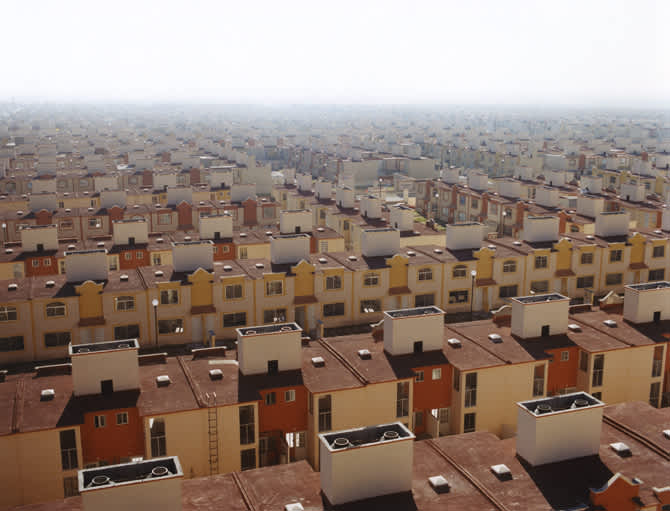Scott Peterman: New Work
Overview
Photographer Scott Peterman might not ever include people in his photographs, but they are never completely absent. In almost all of his large-scale color photographs, taken with a large-format camera, there is evidence of their past and eventual presence. In his series of Ice Houses, exhibited at Jackson Fine Art in 2003, Peterman photographed makeshift shacks, built to provide quasi-protection for ice fishers, standing alone amidst stark whiteness. The solitude permeating this series could nearly silence a noisy room, but the very existence of the ice houses, personalized by their owners to various degrees, prove the area not as lifeless as it looks. The same suggestive approach to human presence appears in Peterman’s new work of cityscapes and landscapes. He presents sprawling mega-cities, like Sao Paulo, Brazil, notorious for its lively chaos, like it’s an abandoned epicenter of long ago. He photographs dark sand dunes which one could easily assume to be on the fringes of the earth except for the curvaceous tire tracks left by joyriding thrill seekers. Peterman’s photographs illustrate that human interaction with its environment is consequential and continuous, even without a person in sight.
Because of their formal intricacy, the glorious irony is that Peterman’s photographs can exist without human transference and announcement of meaning. They obviously recall several tenants of Minimalism—the manipulation of scale, the reduction of objects to their elemental nature. However there is none of the monotony that eventually led to the movement’s demise. Peterman delivers a fresh and limitless perspective of form, transforming the space which we occupy, space we consider usable and organic, into simple and repeating geometric forms and patterns.








